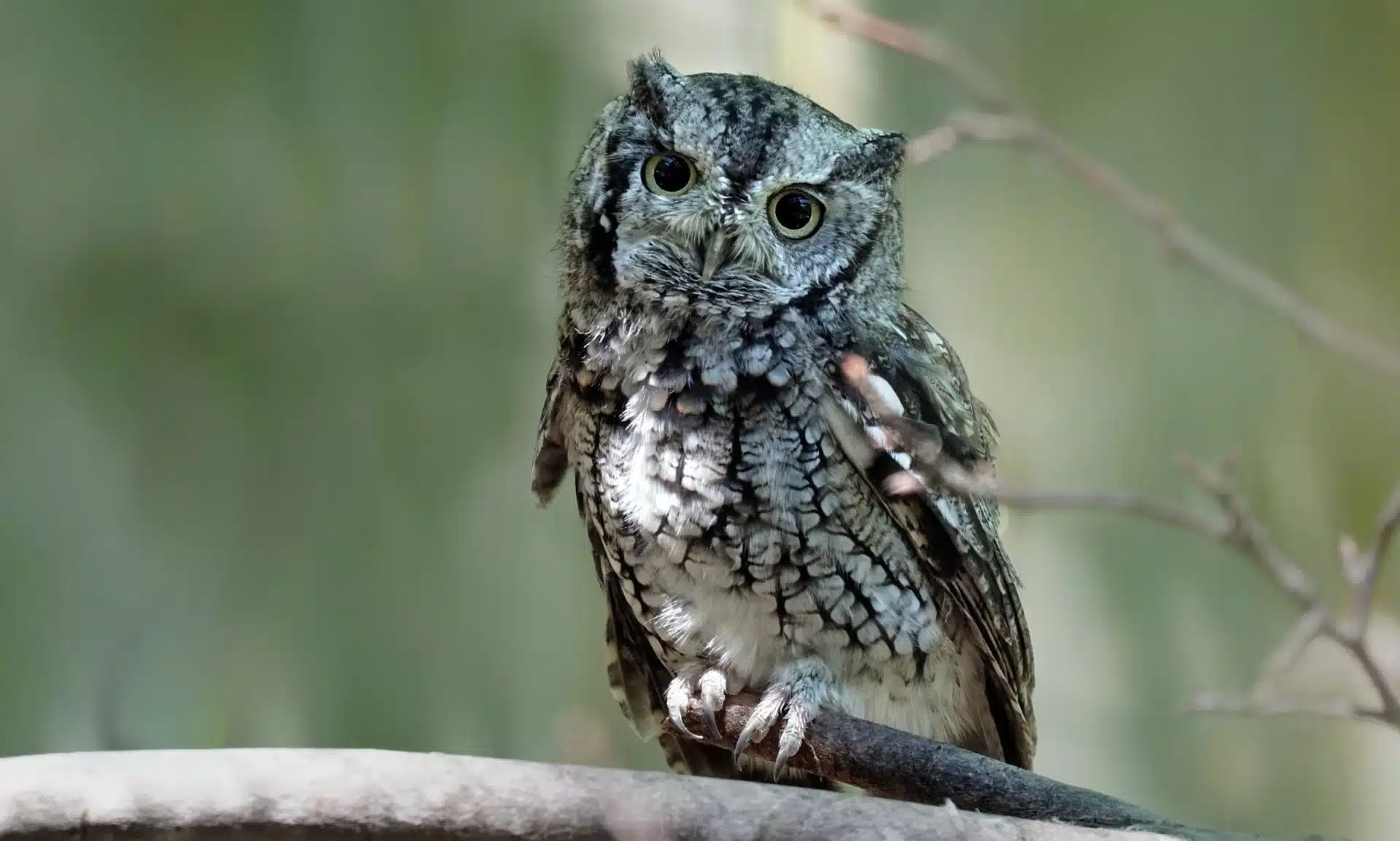Birds
Eastern Screech-Owl
Megascops asio

Voice: Both males and females. Males deeper voice Song: descending whinny like horse “nay” Call: soft hoots to loud barking calls; screeches with metallic beak click
Eastern screech-owls are common owls in woodland areas including farmland, suburban lots and city parks. They are mostly active at night and prefer wooded areas with rivers and streams. They are experts in daytime camouflage. Their two different color phases allow them to hide unnoticed in tree nooks during the day. Rufous color individuals are mainly seen in areas of pine trees, and gray individuals are seen in oak trees.
Eastern screech–owls forage at night on various small animals, including birds, reptiles, invertebrates and mammals. They regurgitate their prey’s bones, fur or feathers once or twice a day. These oval pellets are usually found on the ground beneath their roosting tree. Eastern screech-owls locate their prey by sound and sight. Generally, they hunt from perches six to ten feet off the ground. Once they spot a prey they swoop down and grab them with their strong talons. If they are exceptionally good at hunting, they can snatch an insect or bat flying in the air and snag fish or tadpoles in shallow water.
Eastern screech-owls nest in cavities. They do not excavate the cavities themselves, but rather depend on holes made by woodpeckers, rot or man–made nesting boxes. Once a cavity is chosen, females make a depression, laying 4-5 white eggs on existing cavity debris, such as woodchips, twigs, feathers and droppings found in the bottom of the cavity from a previous year’s nest.
Eastern screech-owls are usually monogamous and remain together for life. However, some males will mate with two different females. The second female will push the first one out of the nest, lay her own set of eggs and raise both sets of young. Females incubate the eggs for around twenty-one days. Males do all the hunting for the females and newly hatched young. Females feed the chicks with prey delivered by the males for the first few weeks. Young will begin to feed themselves and cast pellets in ten days. Young leave the nest about four weeks after hatching and are fed by parents for an additional eight to ten weeks.
Eastern screech-owls are common and widespread. U.S. Partners in Flight estimates a global breeding population of 900,000 with 95% living in the U.S., 4% in Mexico, and 1% in Canada. Their ability to adapt well in the presence of humans has allowed them to survive in urban and suburban areas. Studies have shown that the populations of suburban owls often survive better than rural owls. This suburban survival may be due to varied, more readily available diet, less predation and number of nesting boxes.
Best Location to View: Woodland Garden, Working Woods
Color: Reddish or Grayish overall; darker breast streaks; pointed ear tufts, gray beak and yellow eyes
Range: Year-round resident east of the Rocky Mountains to the Atlantic Ocean; Canada boreal forests south to Mexico.
Size: 7-9"
Wingspan: 18-22"




